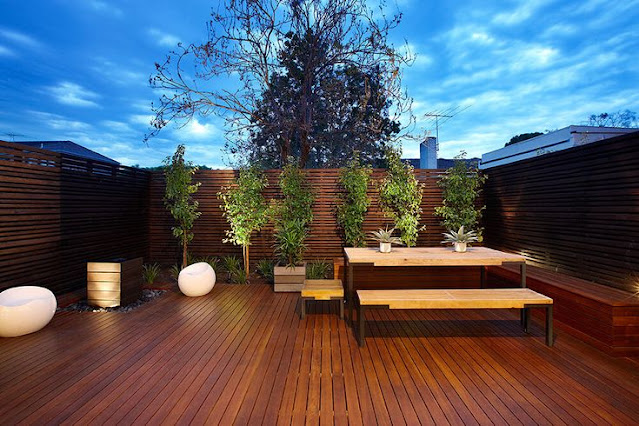Wooden Decking Market Is Estimated To Witness High Growth Owing To Increasing Demand for Outdoor Living Spaces
 |
| wooden decking market |
The global wooden decking market is estimated to be valued at US$ 20,851.70 million in 2021 and is expected to exhibit a CAGR of 5.27% over the forecast period 2022-2030, as highlighted in a new report published by Coherent Market Insights.
Market Overview:
Wooden decking refers to the construction of outdoor floors
or platforms made from wood materials. These wooden decks provide aesthetic
appeal and enhance the overall look of outdoor spaces such as gardens, patios,
and terraces. They offer several advantages such as durability, easy
installation, low maintenance, and resistance to insects and decay. The
increasing demand for outdoor living spaces such as rooftop gardens, outdoor
seating areas, and backyard patios is driving the growth of the wooden decking
market. Furthermore, the rising popularity of eco-friendly and sustainable
construction materials is also contributing to market growth.
Market key trends:
One key trend in the wooden decking market is the growing
preference for composite decking materials. Composite decking is a blend of
wood fibers and plastic, offering the combined benefits of both materials. It
exhibits enhanced durability, resistance to fading, warping, and rotting, and
requires minimal maintenance compared to traditional wooden decks. Composite
decking also offers a wide range of colors, textures, and finishes, allowing
homeowners to achieve the desired aesthetics for their outdoor spaces. The
demand for composite decking is increasing as consumers seek long-lasting and
low-maintenance decking solutions.
PEST Analysis:
Political:
The political environment plays a crucial role in the wooden decking market.
Government regulations regarding forest conservation, sustainability, and trade
policies impact the availability and cost of raw materials. Additionally,
political stability in key exporting regions can affect the supply chain and
pricing.
Economic:
The economic factors influencing the wooden decking market are primarily
focused on disposable income and construction activities. As the global economy
grows, consumers have increased purchasing power, leading to higher demand for
outdoor living spaces and decking materials. Economic factors also include
interest rates, inflation rates, and foreign exchange rates, which can impact
the cost of production and pricing.
Social:
Social factors such as changing lifestyle preferences, growing urbanization,
and an increasing focus on sustainable living drive the demand for wooden
decking. Consumers are opting for outdoor spaces that enhance their quality of
life, creating a need for attractive and durable decking materials. Moreover,
the preference for eco-friendly and natural products is gaining traction,
aligning with the use of wooden decking.
Technological:
Technological advancements in the decking industry, such as improved wood
treatment techniques and innovative installation methods, have positively
impacted the market. New manufacturing processes and materials contribute to
the durability and longevity of wooden decking, meeting the evolving consumer
demands. Additionally, digitalization and e-commerce platforms have made it
easier for manufacturers and distributors to reach a wider customer base.
Key Takeaways:
The global
wooden decking market is projected to witness high growth, exhibiting a
CAGR of 5.27% over the forecast period from 2022 to 2030. This growth is
attributed to increasing disposable income, urbanization, and the rising demand
for outdoor living spaces.
Regionally, North America is expected to be the fastest-growing and dominating
region in the wooden decking market. The region's strong economy, coupled with
a high standard of living, drives the demand for outdoor decking. Moreover,
rising awareness about sustainable practices and eco-friendly products
contribute to the market growth in North America.
Key players operating in the wooden decking market include The AZEK Company
Inc., Deckorators Inc., Deck Solutions LLC, DuraLife Decking & Railing
Systems, Fiberon, Humboldt Sawmill Company LLC, Kebony AS, Metsa Wood Thermory,
Trex Company Inc., United Construction Products Inc. (BISON Innovative
Products), Mendocino Forest Products Company LLC, NeoTimber, Shubh Composites,
and Tecnodeck (Mitera Group). These key players are actively involved in
product innovation, strategic partnerships, and expansion to maintain their
market position.
In conclusion, the global wooden decking market is
projected to witness significant growth in the coming years, driven by the
increasing demand for outdoor living spaces and the preference for sustainable
construction materials. The growing popularity of composite decking materials
is expected to further boost market growth. Key players in the market include
The AZEK Company Inc., Deckorators Inc., DuraLife Decking & Railing
Systems, Trex Company Inc., and others.
Read More:



Comments
Post a Comment